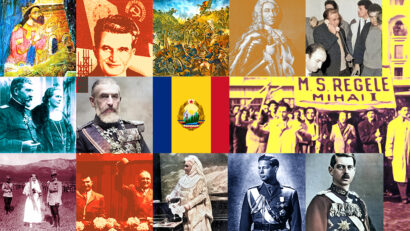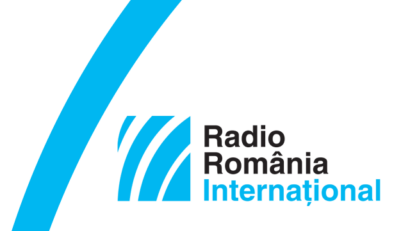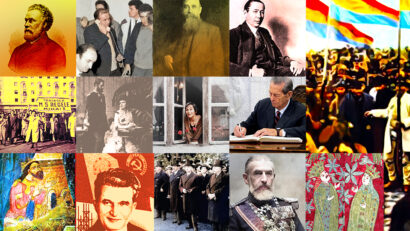The Ideology of Moldovan Identity
Moldovan identity emerged as a formula in the imperialist discourse of Russia, used to undermine the construction and consolidation of the Romanian state as early as the mid 9th century

Steliu Lambru, 04.09.2017, 12:00
It encouraged separatism, which opposed the union of Wallachia and Moldavia, which led to the formation of the modern Romanian state. However, Moldovan identity took shape fully during the Soviet regime, and its heritage lasts to this day. Historian Andrei Cusco from Chisinau State University, has drawn a brief time line of the concept: “I would like to mention a very important person in the history of the church in Bessarabia. We are talking about the last important bishop in the Czarist period, 1908-1914, Serafim Ciceagov. He was grand-grandson to Admiral Ciceagov, who was the Czar’s envoy to Bessarabia in 1812. Like Pavel Lebedev, Serafim Ciceagov was a symbol of the attempt to place the Bessarabian church under central control. He is the first and only imperial dignitary who tried to impose a quasi-Moldovan project. During the imperial period, up to the early 20th century, there was no element that could be defined as Moldovan in the Russian perception of Bessarabia. Bessarabian Romanians were perceived by most Russian observers as Romanians with a regional specificity. There is no tendency to prove that Romanians from Bessarabia were somehow fundamentally different from those in Romania, or to establish a separate Moldovan nation.
The situation changed radically after the Bolshevik revolution of 1917. The USSR, out of a wish for revenge and to recover Bessarabia, which it had lost in 1917-1918, created the Moldovan Socialist Soviet Autonomous Republic on the left bank of the Dnestr, with the capital city based in Balta, and then in Tiraspol, with the declared aim of spreading the idea that a so-called Moldovan nation existed.
Andrei Cusco: “In the inter-war period, Soviet cultural activists who wanted to form a Moldovan nation did not know what it was supposed to look like. There was a time, between 1932 and 1938 when Latin script was introduced in the Moldovan Socialist Soviet Autonomous Republic, with a standard identical to the Romanian one. There was no difference between what was being published in Tiraspol in Romania and what was being published in Chisinau. The previous period, between 1924 and 1932, and especially after 1938, was marked by deliberate attempts to create a Moldovan language and culture that were based on dubious material. One such material was a local dialect, spoken in the villages in Trans-Dniester. The Soviet national idea was circumscribed to the idea of cultural revolution, these people had to burn stages at a savage pace, they wanted to achieve in one or two decades what it would take thousands of years. The same thing was happening with the so-called Moldovan nation, except here the stakes were much more clearly defined: to combat Romanian nationalism, the Romanian national project.
Once Bessarabia was re-annexed in 1940, and particularly after 1944, other significant changes were brought to the Moldovan ideology. Andrei Cusco: “It is more interesting what happened after 1940 and especially after 1944, when Soviet authorities returned to Bessarabia. They had a couple of scenarios in mind. One such scenario was meant to perpetuate the Transdniester model, that of creating a language and a culture out of nothing, totally opposed to Romanianism. But that didnt actually happen, as the Soviet Moldovan intellectuals, especially the writers, who were schooled in the interwar period, although communists, did not accept that standard, that new canon the Soviets tried to impose on them. Towards the mid-1950s, a comeback to Romanian cultural models occurred, both in linguistic and literary terms. In 1957, when the last language reform was implemented, the Romanian standard was reintroduced. So a latent re-Romanianisation of the Soviet projects occurred. In the 1960s, if somebody read a text in the Cyrillic script, written in Romanian, officially called ‘Moldovan in Bessarabia, they could not tell that text from any other text published in Romania. On one hand there was a process of Russification, while on the other, the Moldovan ideology, proclaimed as state policy, was in fact abandoned as of the late 1950s. Im strictly speaking about the linguistic and cultural sphere, since the Moldovan ideology was not abandoned in the broader identity sphere. In the public consciousness, school and mass-media inoculated, especially among peasants, the fact that they were Moldovans, somehow different from the Romanians, although a clear explanation for that has never been given.
After the collapse of communism and the dismantling of the Soviet Union in 1991, we have witnessed another stage of Moldovan ideology, an even more primitive one, according to Andrei Cusco: A starkly different thing is the Moldovan ideology after 1990-1991, when Moldova obtained its independence, as opposed to the Soviet Moldovan ideology, which was a hybrid between the Soviet mindset and some sort of Romanian, mirror-reflected nationalism. The self-styled Moldovan nationalists are somewhat very radical, in that they lend elements of ethnicity to Moldovan nationalism. Using the Romanian model, they try to reverse things. They have also tried to demonstrate they is an alleged continuity between todays Bessarabia and the medieval Moldovan state, which is a preposterous tenet. In the same line, they also say there are Moldovan identity elements preceding Romanian identity, given that the Romanian nation is their opponent. However, todays advocates of Moldovan ideology are less convincing even when compared to the Soviet model, which was based on the strong emphasis laid on distinctive elements, on differences, but they did not bring ethnicity-based theories beyond reason. That would have been very primitive even for the Soviet advocates of the Moldovan ideology, as they tried to build up something of enduring relevance, starting from class and ideology criteria.
Todays Moldovan ideology is a residual ideology. Despite its nonsensical elements, its force has remained significant, yet it has been constantly on the wane. (Translated by C. Cotoiu and E. Nasta)





























